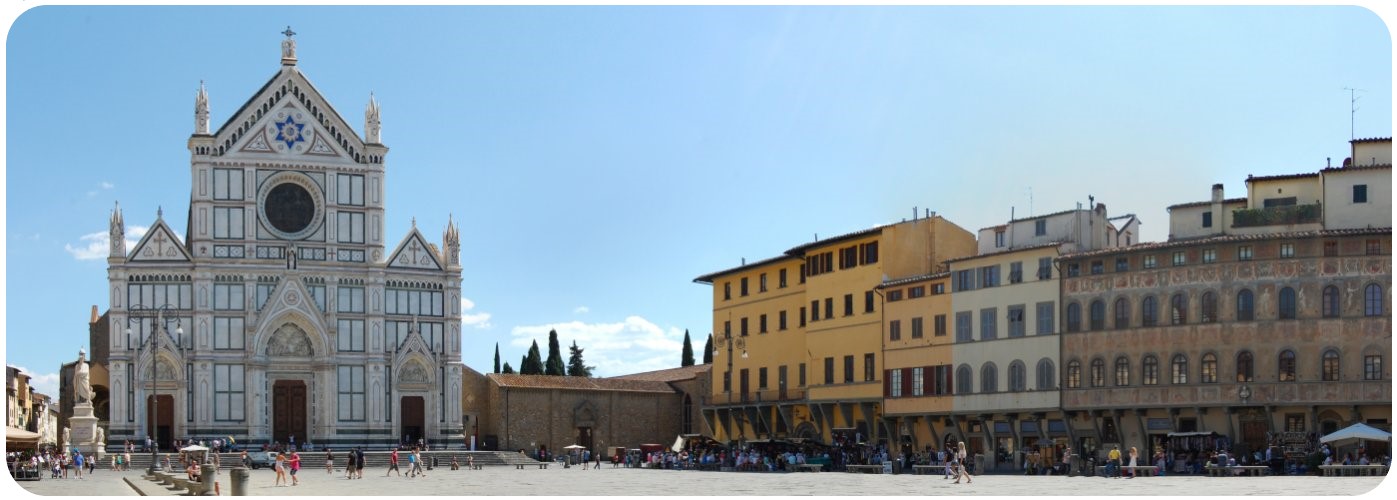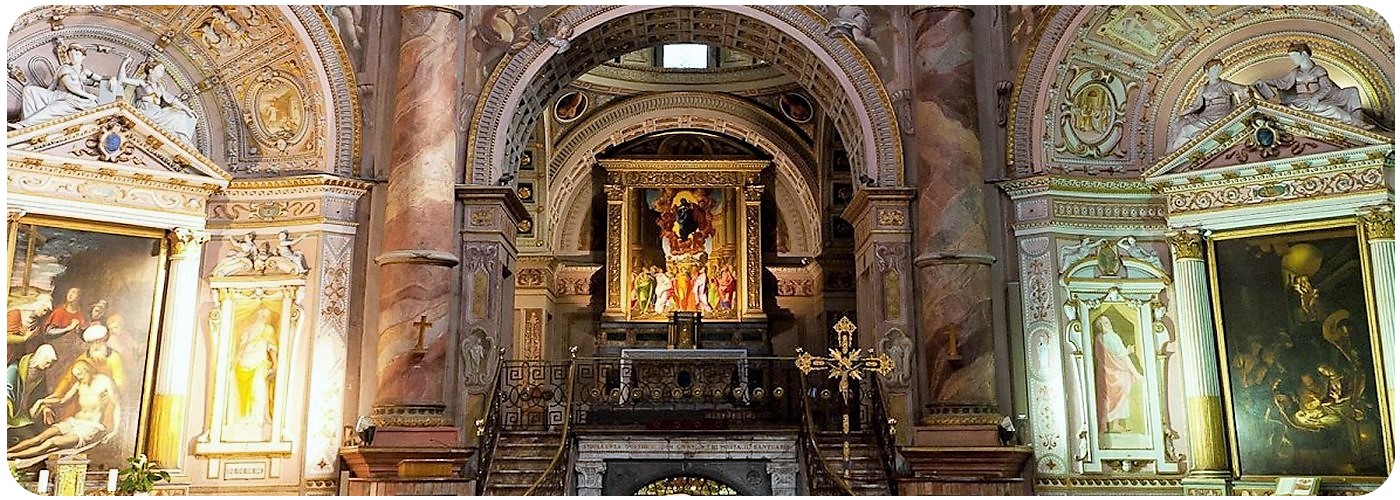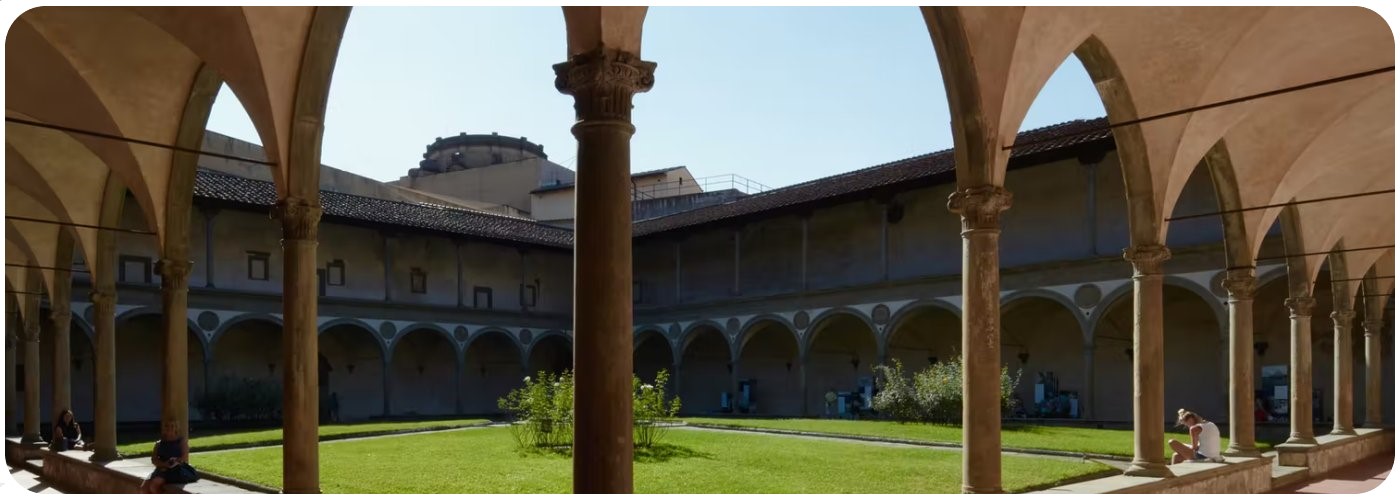The Basilica of Santa Croce
The Basilica of Basilica di Santa Croce is the principal Franciscan church in Florence and the largest Franciscan church in the world, situated on the Piazza di Santa Croce (about 800 meters from the Duomo).
Some of the most illustrious Italians are buried inside the Basilica, including: Michelangelo, Galileo, Machiavelli, the poet Foscolo, the composer Rossini. For this reason it is also known as the "Temple of Italian Glories".

Legend has it that the Basilica was founded by San Francesco. The construction of the church, which replaces an older building, began on 12 May 1294, thanks to some of the wealthiest families in the city. Pope Eugene IV consecrated it there in 1442.
The building's design reflects the austere approach of the Franciscans. The plant is an Egyptian cross or Tau (one of the symbols of St. Francis). It is 115 meters long with three naves separated by rows of octagonal columns. South of the church there was a convent of which some buildings remain.
Santa Croce is famous for its sixteen chapels, many of which decorated by Giotto and his pupils, for its tombs and cenotaphs. Inside the Basilica there are works by: Canova, Cimabue, Donatello, Vasari and many others, including the contemporary artist Henry Moore who created the statue of a warrior.
In 1560 due to the Counter-Reformation the Basilica underwent heavy changes that caused damage to the decorations and most of the altars were lost.
In 1866 the complex became public property, as part of the government suppression of most of the religious houses, following the wars that led to independence and the unification of Italy.
In 1966, during the flood of Florence, the Basilica of Santa Croce suffered serious damage to buildings and art treasures. It took several decades for all the damage to be repaired.

The Primo Chiostro of the Basilica of Santa Croce
The First Cloister is the work of Filippo Brunelleschi (the author of the Dome of the Cathedral) and was completed in 1453. It houses the Pazzi Chapel, attributed to Brunelleschi which is considered one of the masterpieces of Renaissance architecture.
In the First Cloister there is also a monument to Florence Nightingale, known as "the woman with the lantern", considered the founder of modern nursing, as she was the first to apply the scientific method through statistical use. Today the refectory outside the cloister houses the Museo dell'Opera di Santa Croce.
The façade of the Basilica of Santa Croce
The neo-Gothic marble facade was built between 1857 and 1863. It was designed by the Jewish architect Niccolò Matas of Ancona, who included a prominent Star of David in the composition. Matas would have liked to be buried with his peers, but because he was Jewish, he was buried under the threshold and honored with an inscription.
The bell tower of the Basilica of Santa Croce was built in 1842, replacing a previous one damaged by lightning.
Today the former dormitory of the Franciscan friars houses the Leather School. Visitors can watch the artisans make bags, wallets and other leather goods that are then sold in the adjacent shop.
The Basilica of Santa Croce is also the last stop on our morning walking tour. If you participate, our guides will tell you much more about this "beauty of Florence".
